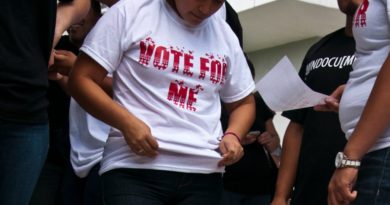Editorial: More Confusion Than Safety With New ID Policy
With a new policy requiring all students and faculty to display their Miami Dade College IDs, MDC hopes to cement its campuses as safe educational locations. But with a late-term rollout, a vague enforcement policy and uncertainty in regards to long-term benefits, the measure seems to add more confusion than safety.
After the mass shooting at Marjory Stoneman Douglas High School in February, according to MDC’s director of communications Juan Mendieta, school officials met to review the school’s college-wide emergency management plan and discuss areas of improvement. In deliberating multiple policies, they decided the best idea would be the ID policy.
“It’s what is already in place in other governmental institutions,” Mendieta said.
But the implementation of the policy has been haphazardous at best. When The Reporter inquired about it during its initial introduction, campuses had little to no knowledge of the policy. Then, as the rollout continued throughout April, student awareness was low. North Campus has posters featuring students encouraging others to wear their ID, but at other campuses, the policy is almost an afterthought.
That makes it harder for such an initiative to be enforced. The current policy, Mendieta says, is for public safety officers to engage with ID-less individuals, inquire about their role at MDC and then explain the new requirement for future reference—that’s it. But when most MDC students are part-time and have other responsibilities in their lives, it can be much harder for them to remember to wear their IDs, especially when their time on campus is more limited. And, if all they can expect from not wearing them is a talking-to, the policy is more likely to fade to the back of students’ minds.
Mendieta stresses that the policy is still fluid and the explanations could grow into written warnings come the fall semester.
“We don’t want to punish people out the gate,” Mendieta said. “We want this to be a positive experience.”
But that still doesn’t confirm whether that “could” will turn into a “will” or if the enforcement will go beyond written warnings, making it harder for students and faculty to understand the potential consequences for issues that could relate to human error. With a policy affecting almost 200,000 students and hundreds of faculty members, that isn’t acceptable.
Also concerning is the late-term rollout. School shootings having been a national issue since the 1999 shooting at Columbine High School and only increasing after the 2013 massacre at Sandy Hook Elementary School, the question comes down to whether MDC could have implemented this policy sooner or if, because the Marjory Stoneman Douglas attack occurred in South Florida, it was only introduced due to the more local impact thereby showing that the College was eager to show its response to the attack versus it being an addition to current safety procedures.
The College views it as both, according to Mendieta. The plan was to “soft launch” it during the spring following the shooting and increase awareness throughout the summer, making changes throughout the way. Therefore, by the fall term, the policy will become fully integrated into the College.
“It’s what higher education has always been about,” Mendieta said. “We constantly review our plans, constantly review our training exercises.”
But, when the policy has to go through so many leaps and bounds to be integrated, especially when all the details haven’t been fully locked in, it’s hard to see how people can feel safer.




